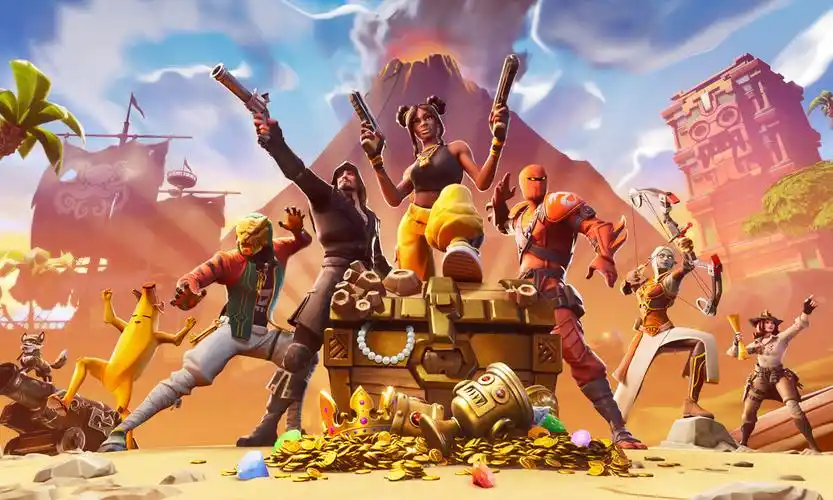Title: Beyond the Screen: How Deep Game News Stories Forged Unbreakable Communities
The digital age has often been criticized for fostering isolation, replacing face-to-face interaction with disembodied text and fleeting connections. Yet, within the world of video games, a powerful counter-narrative has emerged. Beyond the reviews, trailers, and patch notes, a different kind of gaming journalism has taken root—one that doesn't just report news but actively cultivates and strengthens communities. These are the deep-dive stories, the investigative pieces, and the human-interest narratives that transform a scattered player base into a cohesive, caring, and engaged collective. They move beyond the "what" of a game update to explore the "who" and "why," creating shared experiences that resonate on a profoundly human level.

The Power of Shared Narrative: Uncovering Stories Together
Some of the most potent community-building news stories are those that involve a collective journey of discovery. The phenomenon of game mysteries and "Alternate Reality Games" (ARGs) is a prime example. News outlets that cover these unfolding stories don't just report; they become the central hub for collaboration.
Consider the infamous mystery of Portal 2’s "GLaDOS@Home" campaign. Before the game's release, hidden clues within patches, website updates, and even radio signals sent the community into a frenzy. Gaming news sites like Valve News Network and larger outlets like Kotaku didn’t simply post the answers. They chronicled the discovery process, highlighted fan theories, and provided platforms for players to pool their intellect. This transformed a marketing campaign into a global puzzle-solving event. Readers weren't passive consumers; they were active participants, feeling a shared sense of ownership and triumph with thousands of others when a new piece of the puzzle was found. The news story became a live, breathing log of a community’s achievement.
Similarly, the meticulous, player-driven archaeology of Destiny’s lore, particularly the uncovering of the tragic story of the Exo Stranger and the Vex, was fueled by deep-dive articles and videos. These pieces took the fragmented pieces of lore found on weapon descriptions or in hidden scannable objects and wove them into a coherent, compelling narrative. This effort, celebrated and discussed in news features, gave the community a common purpose—to understand the universe they inhabited more deeply. It created a class of "Lore Masters," respected community figures whose insights were often featured in news content, further blurring the line between journalist and community member and fostering a hierarchy of knowledge that encouraged participation.
From Adversity to Advocacy: Stories That Rally a Community
Community is often forged in fire, and gaming news has played a crucial role in turning moments of crisis into stories of incredible solidarity. When a game faces a potentially devastating issue or a developer encounters hardship, deep, empathetic reporting can channel a community’s concern into powerful support.
The development of Hollow Knight: Silksong has been a masterclass in patient anticipation, but it was also punctuated by concern for the well-being of its small development team, Team Cherry. Thoughtful articles that went beyond "Where is Silksong?" to discuss the immense pressure on indie developers, the perils of crunch, and the importance of creative health did a vital service. They reframed the community’s impatience into empathy and respect. The discourse, guided by these narratives, shifted from demanding a release date to advocating for the developers' right to take their time. This created a more supportive and understanding community, united by a shared value: care for the creators.
Even more profound was the story surrounding The Witcher series and its lead quest designer, Pawel Sasko. Following the release of Cyberpunk 2077, Sasko began weekly streams to openly discuss the game’s rocky launch, the development process, and the lessons learned. News coverage of these streams wasn’t just about the game’s fixes; it was about the human story of accountability, passion, and redemption. Articles highlighting his transparency and dedication fostered a new level of respect and connection between the developers at CD Projekt Red and the players. The community rallied around this narrative of hard work and honest communication, transforming a period of criticism into one of mutual respect and collective hope for the game’s future.
Celebrating the Human Element: From Fan Creations to Personal Journeys
Finally, deep game news stories that foster community are those that spotlight the people within it. This goes beyond showcasing fan art; it’s about telling the stories behind the creators and the players.
The "Smash Brothers" community, for instance, is often covered for its competitive tournaments. But the stories that truly resonate are the human-interest pieces: the profile on a player who overcame a physical disability to compete, the story of a longstanding rivalry built on mutual respect, or the coverage of a local tournament that raised money for charity. These narratives highlight the shared values of perseverance, sportsmanship, and generosity within the community, giving members heroes to cheer for and values to aspire to, strengthening their bond beyond the game itself.
The phenomenon of games like Dreams and Minecraft is built entirely on user creation. News sites that feature incredible player-made levels, complex redstone contraptions, or breathtaking architectural wonders do more than just share cool content. They validate the hours of effort poured into these creations and hold them up as worthy of professional recognition. This creates a virtuous cycle: creators are inspired to build more, and the community is given a constant stream of new, shared experiences to enjoy and discuss, all curated and celebrated by the gaming press.
In conclusion, the most impactful game journalism does not sit apart from the community it covers. By diving deep into mysteries, advocating for empathy during adversity, and celebrating the incredible humans who play and create, these stories provide the shared context, the common values, and the emotional touchstones that transform a group of individuals into a true community. They are the digital campfire around which players gather, not just to be informed, but to belong.
Tags: #GamingCommunity #GameJournalism #VideoGameCulture #PlayerStories #IndieGames #GamingNews #CommunityBuilding #GameDevelopment #OnlineCommunities #GamerCulture














